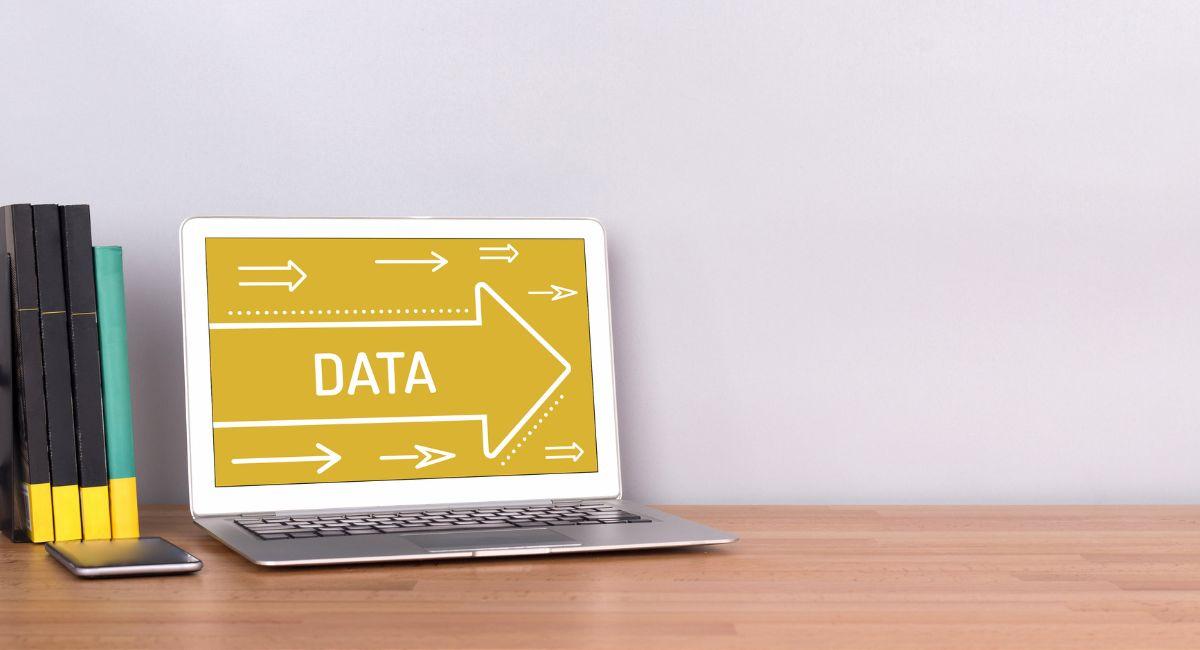In the dynamic realm of technology, blockchain has emerged as a transformative force, disrupting industries and reshaping the way we perceive data and transactions. As blockchain technology continues to evolve, the ability to read and gather data from the blockchain becomes increasingly crucial. This comprehensive guide aims to demystify the process, providing a roadmap for enthusiasts, developers, and professionals keen on unlocking the vast potential embedded in blockchain data.
Understanding the Basics of Blockchain:

Before delving into the intricacies of reading and gathering data from the blockchain, it’s essential to grasp the fundamental concepts that underpin this revolutionary technology.
- Decentralization and Distributed Ledger:
- At the core of blockchain lies its decentralized and distributed nature. Unlike traditional databases, which are centralized and controlled by a single entity, blockchain relies on a network of nodes, each maintaining a copy of the ledger. This decentralization ensures transparency, security, and immutability.
- Blocks, Transactions, and Consensus Mechanisms:
- Blockchain organizes data into blocks, each containing a list of transactions. These blocks are linked together through cryptographic hashes, forming a chain. Transactions, once added to the blockchain, are virtually irreversible. Consensus mechanisms, such as proof-of-work or proof-of-stake, govern how new blocks are added, ensuring agreement among network participants.
Tools for Reading Blockchain Data:

Reading and extracting relevant data from the blockchain is a crucial aspect of engaging with decentralized systems. Whether you’re an enthusiast exploring blockchain transactions or a developer building decentralized applications, understanding how to navigate and extract meaningful information is fundamental. In this detailed guide, we’ll explore various tools and techniques for reading and extracting relevant data from the blockchain.
1. Blockchain Explorers: Navigating the Ledger
Blockchain explorers are user-friendly web-based tools that facilitate the exploration of blockchain data. They provide a visual representation of the blockchain, allowing users to inspect transactions, blocks, and addresses.
a. Transaction Details:
- Blockchain explorers enable users to delve into specific transactions. By entering a transaction hash or wallet address, users can access details such as sender and receiver addresses, transaction amounts, timestamps, and confirmation status. This information is invaluable for tracking the flow of funds and verifying transaction authenticity.
b. Block Analysis:
- Explorers also allow for the analysis of individual blocks. Users can examine details of a block, including transaction information, fees paid, and the overall state of the network at a specific point in time. This provides insights into the health and activity of the blockchain.
c. Address Information:
- Users can explore specific wallet addresses to view their transaction history, balances, and associated metadata. This feature is essential for tracking the activity of particular users or entities on the blockchain.
Popular Explorers: Blockchain.info for Bitcoin, Etherscan for Ethereum, and Blockchair for multiple blockchains.
I try to use blockchain products as much as possible, And seeing how important VPNs are for crypto and after reading how a lot of traditional VPNs are logging user’s data I suggest looking in to @Sentinel_co
A completely decentralized VPN service!
— Gordon (@AltcoinGordon) December 6, 2021
2. Application Programming Interfaces (APIs): Automating Data Retrieval
Application Programming Interfaces (APIs) provide a programmatic interface for interacting with blockchain networks. They allow developers to fetch specific data, monitor transactions in real-time, and integrate blockchain functionality into applications.
a. Retrieving Transaction Data:
- APIs enable developers to retrieve transaction data programmatically. This is crucial for applications that require real-time updates on transactions or for conducting automated analyses of transaction patterns.
b. Monitoring Addresses:
- By using APIs, developers can monitor specific addresses for incoming or outgoing transactions. This functionality is essential for applications requiring automated alerts or notifications based on specific blockchain events.
c. Smart Contract Interaction:
- For blockchains supporting smart contracts, APIs provide endpoints for interacting with and retrieving data from these contracts. Developers can monitor contract execution, retrieve contract details, and analyze transaction history related to smart contracts.
Popular APIs: Ethereum has the Infura API, while Bitcoin has multiple APIs like Blockchair and Blockstream.
3. Command-Line Interfaces (CLIs): Power in Your Terminal
For advanced users and developers, Command-Line Interfaces (CLIs) provide a direct and efficient way to interact with blockchain nodes.
a. Querying Transaction Information:
- CLIs allow users to query specific transaction details directly from a blockchain node. This is particularly useful for detailed analyses or investigations requiring custom queries.
b. Node Management:
- Advanced users can use CLIs to manage and interact with their own blockchain nodes. This includes tasks such as syncing with the network, checking node status, and managing the local blockchain database.
c. Real-Time Monitoring:
- CLIs provide the capability to monitor the blockchain in real-time, displaying new transactions and blocks as they are added to the network. This is valuable for staying updated on the latest blockchain activity.
Popular CLIs: Geth for Ethereum, Bitcoin Core for Bitcoin.
4. Smart Contract Interaction Tools: Deconstructing DApps
For developers and auditors working with decentralized applications (DApps) and smart contracts, specialized tools facilitate interaction and data extraction.
a. Smart Contract Deployment and Interaction:
- Tools like Remix (for Ethereum) and Truffle simplify the deployment and interaction with smart contracts. Developers can deploy contracts, call their functions, and retrieve data related to contract execution.
b. Contract State and Events:
- These tools provide insights into the current state of smart contracts and events triggered during their execution. This information is crucial for debugging, auditing, and optimizing smart contract functionality.
c. Testing Environments:
- Smart contract tools offer testing environments where developers can simulate contract interactions before deploying them on the live blockchain. This ensures that contracts function as intended and helps identify potential issues.
Popular Smart Contract Tools: Remix, Truffle, Hardhat.
Also, read – A Comprehensive Guide To Unlocking The Power Of Blockchain Database
Advanced Techniques for Data Analysis:

As blockchain technology continues to evolve, the demand for advanced data analysis techniques becomes increasingly crucial. These techniques empower researchers, developers, and analysts to glean deeper insights from the vast troves of data embedded in blockchain networks. Let’s explore some advanced techniques that unravel the complexities of blockchain data.
1. On-Chain Analytics:
On-chain analytics involves a granular examination of patterns and trends within the blockchain itself. This technique goes beyond surface-level transaction exploration, delving into the intricacies of transaction volumes, frequency of transactions, and the movement of funds between addresses. On-chain analytics tools leverage the transparency inherent in blockchain ledgers to derive insights into user behavior, network dynamics, and overall blockchain health.
Applications:
- Identifying wallet clusters representing large entities or exchanges.
- Analyzing transaction frequency to detect anomalies or irregular patterns.
- Monitoring the flow of funds between addresses to understand economic activity.
2. Graph Analysis:
Graph analysis explores the relationships and connections between different entities within the blockchain network. This technique treats addresses, transactions, and other elements as nodes in a graph, allowing for the visualization and analysis of complex networks. By examining the topology of the graph, analysts can uncover patterns indicative of certain behaviors, potentially revealing illicit activities or establishing connections between different actors in the network.
Applications:
- Uncovering money laundering or fraud by identifying intricate transaction patterns.
- Visualizing token movements within decentralized ecosystems.
- Detecting network-wide anomalies or suspicious clustering of addresses.
3. Token and NFT Tracking:
With the proliferation of tokens and non-fungible tokens (NFTs) across various blockchain networks, tracking their issuance, transfers, and ownership becomes a vital aspect of data analysis. Specialized tools allow analysts to explore token balances, transaction histories, and associated metadata. This provides insights into the token economy within a specific blockchain ecosystem, facilitating a deeper understanding of user engagement with digital assets.
Applications:
- Monitoring the adoption and circulation of specific tokens within a blockchain.
- Analyzing the popularity and trading patterns of NFTs within decentralized marketplaces.
- Tracking token movements to identify potential market trends or shifts in user behavior.
Challenges and Considerations:
 While these advanced techniques offer unparalleled insights into blockchain data, they come with a set of challenges and considerations that analysts and developers must navigate.
While these advanced techniques offer unparalleled insights into blockchain data, they come with a set of challenges and considerations that analysts and developers must navigate.
1. Privacy Concerns:
Blockchain transactions are often touted as pseudonymous, providing a layer of privacy. However, advanced analytics techniques can potentially de-anonymize users by uncovering patterns and correlations. Balancing the need for transparency with user privacy is a delicate challenge, requiring careful consideration of ethical practices and compliance with privacy regulations.
2. Data Synchronization:
Blockchain networks are dynamic, with continuous updates and additions to the ledger. Ensuring that analysis is conducted on the most up-to-date data is challenging due to potential delays in data synchronization. Analysts relying on blockchain explorers, APIs, or local nodes must be aware of these delays to avoid drawing conclusions based on outdated information.
3. Smart Contract Security:
As smart contracts play an integral role in many blockchain ecosystems, analyzing their code and execution is crucial. However, this poses security challenges. Analyzing smart contracts without a thorough understanding of security best practices can lead to overlooking vulnerabilities, potentially exposing decentralized applications and their users to risks.
4. Legal and Ethical Considerations:
Engaging in advanced blockchain data analysis requires adherence to legal and ethical frameworks. Compliance with regulations, such as data protection laws, and respecting the principles of decentralization and user consent are paramount. Unethical or unauthorized data analysis can lead to legal consequences and damage the reputation of individuals and organizations involved.
5. Resource Intensiveness:
Executing advanced data analysis techniques often requires significant computational resources. Graph analysis, in particular, can be computationally intensive as the complexity of the network grows. Analysts must consider the scalability of their tools and infrastructure to handle the increasing volume of blockchain data.
Conclusion:
As blockchain technology matures, the ability to read and gather data from the blockchain becomes a valuable skillset. Whether you’re a blockchain enthusiast, developer, or industry professional, understanding the tools, techniques, and challenges associated with blockchain data is essential for navigating this decentralized landscape. By leveraging blockchain explorers, APIs, and advanced analytics, individuals can unlock the full potential of blockchain data, gaining insights that drive innovation and contribute to the evolution of decentralized systems. This ultimate guide serves as a compass, empowering you to explore, analyze, and interpret the vast tapestry of data woven into the fabric of blockchain technology.
Stay informed with daily updates from Blockchain Magazine on Google News. Click here to follow us and mark as favorite: [Blockchain Magazine on Google News].
Disclaimer: Any post shared by a third-party agency are sponsored and Blockchain Magazine has no views on any such posts. The views and opinions expressed in this post are those of the clients and do not necessarily reflect the official policy or position of Blockchain Magazine. The information provided in this post is for informational purposes only and should not be considered as financial, investment, or professional advice. Blockchain Magazine does not endorse or promote any specific products, services, or companies mentioned in this posts. Readers are encouraged to conduct their own research and consult with a qualified professional before making any financial decisions.